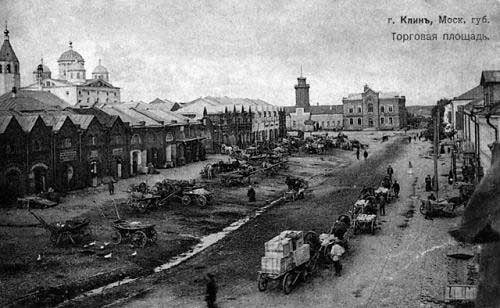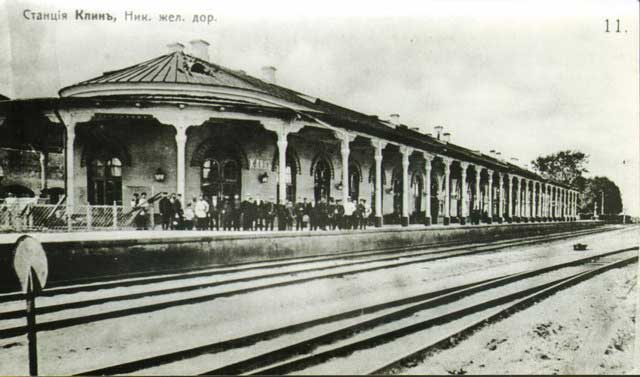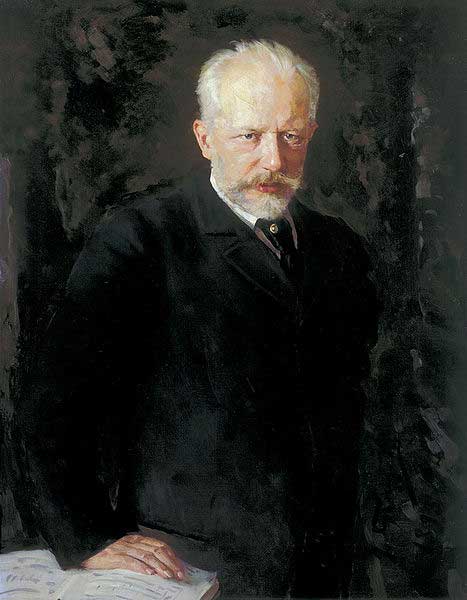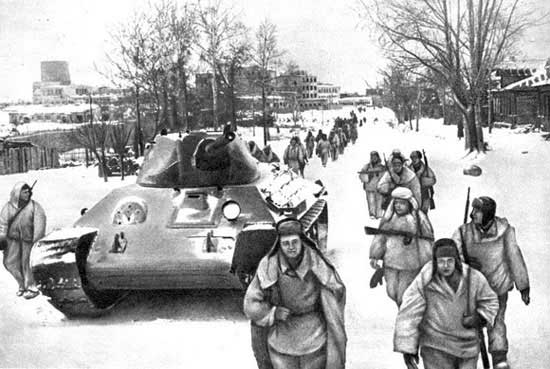History of Klin
14th Century
The first mention of Klin was made in the Nikon Chronicle under the year 1317 when Prince Yuri Danilovich of Moscow arrived in Klin from Dmitrov. The city was founded on the banks of the River Sestra.
15th Century
In 1408 the city was sacked by the Tatars led by Edigu during his rampage against Rus lands. Klin was then part of the Tver Principality, and since it was located between Moscow and Tver it was often involved in the struggles between the two rival Russian principalities. Eventually in 1482, along with the rest of the Tver Principality, Klin was absorbed into the Moscow Principality.
16th Century
Ivan the Terrible and the Oprichniki
Under Tsar Ivan the Terrible, Klin suffered greatly at the hands of the feared oprichniki. In the autumn of 1569 a group of oprichniki numbered in their thousands and led by the tsar himself set off to punish Novgorod Veliky for its perceived treachery. On their way they passed through Klin and, as a foretaste of what was awaiting Novgorod, they ravaged the town and killed it citizens. Later in 1572 Tsar Ivan the Terrible granted Klin and the surrounding lands to his son Ivan. Later these lands were then given as inherited estates to the Romanov noble family.
17th Century
Time of Troubles
During the Time of Troubles in 1617, Klin was besieged by Polish Interventionists. However the defence of the city was led by Prince Dmitri Petrovich Pozharsky-Lopata (not to be confused with the Time of Troubles hero with almost the same name). Under Pozharsky-Lopata's leadership the Polish siege proved unsuccessful.
18th Century
Postal Yam
 With the founding of St Petersburg, Klin found itself in between the former and the new capital and was therefore destined to become an important transit town. In 1702 Tsar Peter the Great issued an edict establishing in Klin what was known as a postal yam - a large station for travellers. The station provided accommodation and meals as well as horses for the large number of people travelling between Moscow and St Petersburg. In 1781 Klin became the district centre of the Klin District of the Moscow Governorate and a coat of arms was created for the city. The coat of arms depicts a postman on horseback with a golden horn. A new town plan was adopted for the city in 1784.
With the founding of St Petersburg, Klin found itself in between the former and the new capital and was therefore destined to become an important transit town. In 1702 Tsar Peter the Great issued an edict establishing in Klin what was known as a postal yam - a large station for travellers. The station provided accommodation and meals as well as horses for the large number of people travelling between Moscow and St Petersburg. In 1781 Klin became the district centre of the Klin District of the Moscow Governorate and a coat of arms was created for the city. The coat of arms depicts a postman on horseback with a golden horn. A new town plan was adopted for the city in 1784.
19th Century
Nikolaev Railroad
 In 1851 Russia's first railroad - the Nikolaev Railroad - was built through Klin connecting St Petersburg with Moscow. A smaller 'second-class' railway station was due to be built in the city, but engineers mixed up the plans and built foundations for a larger 'first-class' style of railway station. This meant that Klin, a rather small provincial town, ended up with a large railway station the same size as the one in Tver - a much larger city and a governorate centre. The arrival of the railway line led to a decrease in the flow of travellers in the postal yam and as a result the trade which flourished around the travellers also declined.
In 1851 Russia's first railroad - the Nikolaev Railroad - was built through Klin connecting St Petersburg with Moscow. A smaller 'second-class' railway station was due to be built in the city, but engineers mixed up the plans and built foundations for a larger 'first-class' style of railway station. This meant that Klin, a rather small provincial town, ended up with a large railway station the same size as the one in Tver - a much larger city and a governorate centre. The arrival of the railway line led to a decrease in the flow of travellers in the postal yam and as a result the trade which flourished around the travellers also declined.
Pyotr Tchaikovsky
 In May 1892, the famous Russian composer Pyotr Tchaikovsky began to rent an estate house on the outskirts of Klin. By this time Tchaikovsky was already in his fifties and after years of travelling around the world he wanted to find a place to settle in near the Russian countryside which he loved so much. Previous to this he had lived in Maidanovo, a village near Klin. Tchaikovsky died just over a year later in 1893 but even in this short period he grew very fond of his Klin home and wrote "I do not know how but have become terribly attached to Klin and I cannot imagine being in a different place". Shortly after the composer's death, his younger brother Modest visited the house intent on turning it into a museum dedicated to the composer. This was achieved the following year in 1894 after the house was purchased.
In May 1892, the famous Russian composer Pyotr Tchaikovsky began to rent an estate house on the outskirts of Klin. By this time Tchaikovsky was already in his fifties and after years of travelling around the world he wanted to find a place to settle in near the Russian countryside which he loved so much. Previous to this he had lived in Maidanovo, a village near Klin. Tchaikovsky died just over a year later in 1893 but even in this short period he grew very fond of his Klin home and wrote "I do not know how but have become terribly attached to Klin and I cannot imagine being in a different place". Shortly after the composer's death, his younger brother Modest visited the house intent on turning it into a museum dedicated to the composer. This was achieved the following year in 1894 after the house was purchased.
20th Century
Second World War
 On 15 November 1941 German tank armies began their approach on Klin as part of the Battle of Moscow. Klin at this time found itself without any Soviet reserves as they had previously been transferred to Volokolamsk in preparation for a Soviet counter-attack. On 24 November 1941, Klin finally fell to the Nazis. However the city was not occupied for long. The Soviet counter-offensive began on 5 December 1941, complete with fresh troops brought in from Siberia. The Soviets reached the outskirts of Klin on 7 December and finally liberated the city on 15 December 1941. During the occupation the Nazis occupied and ransacked the Tchaikovsky House-Museum and used it as a barracks.
On 15 November 1941 German tank armies began their approach on Klin as part of the Battle of Moscow. Klin at this time found itself without any Soviet reserves as they had previously been transferred to Volokolamsk in preparation for a Soviet counter-attack. On 24 November 1941, Klin finally fell to the Nazis. However the city was not occupied for long. The Soviet counter-offensive began on 5 December 1941, complete with fresh troops brought in from Siberia. The Soviets reached the outskirts of Klin on 7 December and finally liberated the city on 15 December 1941. During the occupation the Nazis occupied and ransacked the Tchaikovsky House-Museum and used it as a barracks.

 History
History